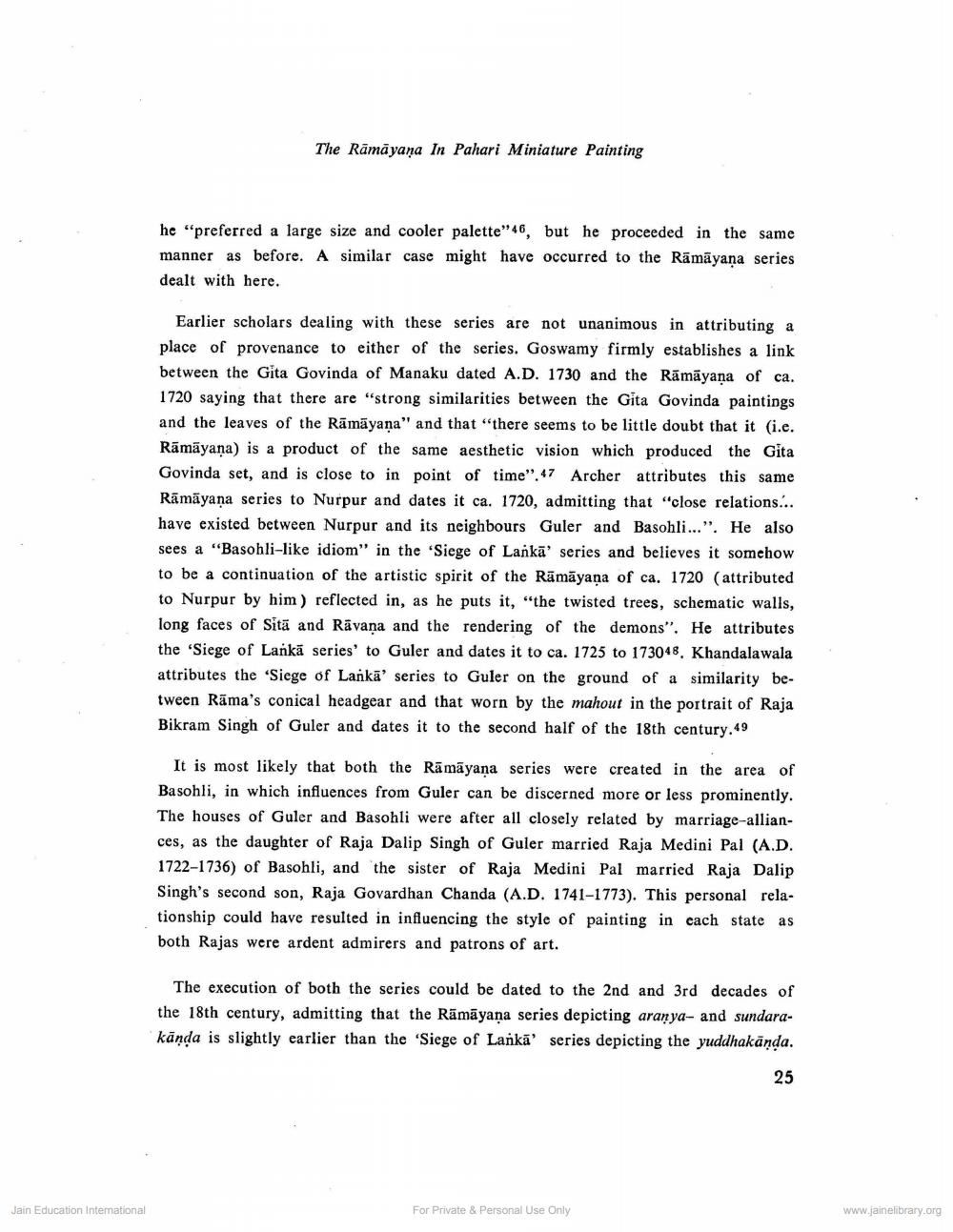________________
The Rāmāyana In Pahari Miniature Painting
he "preferred a large size and cooler palette"46, but he proceeded in the same manner as before. A similar case might have occurred to the Rāmāyana series dealt with here.
Earlier scholars dealing with these series are not unanimous in attributing a place of provenance to either of the series. Goswamy firmly establishes a link between the Gita Govinda of Manaku dated A.D. 1730 and the Rāmāyana of ca. 1720 saying that there are "strong similarities between the Gita Govinda paintings and the leaves of the Rāmāyaṇa" and that there seems to be little doubt that it (i.e. Rāmāyana) is a product of the same aesthetic vision which produced the Gita Govinda set, and is close to in point of time".47 Archer attributes this same Rāmāyaṇa series to Nurpur and dates it ca. 1720, admitting that "close relations... have existed between Nurpur and its neighbours Guler and Basohli...". He also sees a "Basohli-like idiom" in the 'Siege of Lankā' series and believes it somehow to be a continuation of the artistic spirit of the Rāmāyaṇa of ca. 1720 (attributed to Nurpur by him) reflected in, as he puts it, "the twisted trees, schematic walls, long faces of Sitā and Rāvana and the rendering of the demons". He attributes the 'Siege of Lankā series' to Guler and dates it to ca. 1725 to 173048, Khandalawala attributes the “Siege of Lankā' series to Guler on the ground of a similarity between Rāma's conical headgear and that worn by the mahout in the portrait of Raja Bikram Singh of Guler and dates it to the second half of the 18th century.49
It is most likely that both the Rāmāyana series were created in the area of Basohli, in which influences from Guler can be discerned more or less prominently. The houses of Guler and Basohli were after all closely related by marriage-alliances, as the daughter of Raja Dalip Singh of Guler married Raja Medini Pal (A.D. 1722-1736) of Basohli, and the sister of Raja Medini Pal married Raja Dalip Singh's second son, Raja Govardhan Chanda (A.D. 1741-1773). This personal relationship could have resulted in influencing the style of painting in each state as both Rajas were ardent admirers and patrons of art.
The execution of both the series could be dated to the 2nd and 3rd decades of the 18th century, admitting that the Rāmāyaṇa series depicting aranya- and sundarakānda is slightly earlier than the 'Siege of Lankā' series depicting the yuddhakānda.
25
For Private & Personal Use Only
www.jainelibrary.org
Jain Education International




